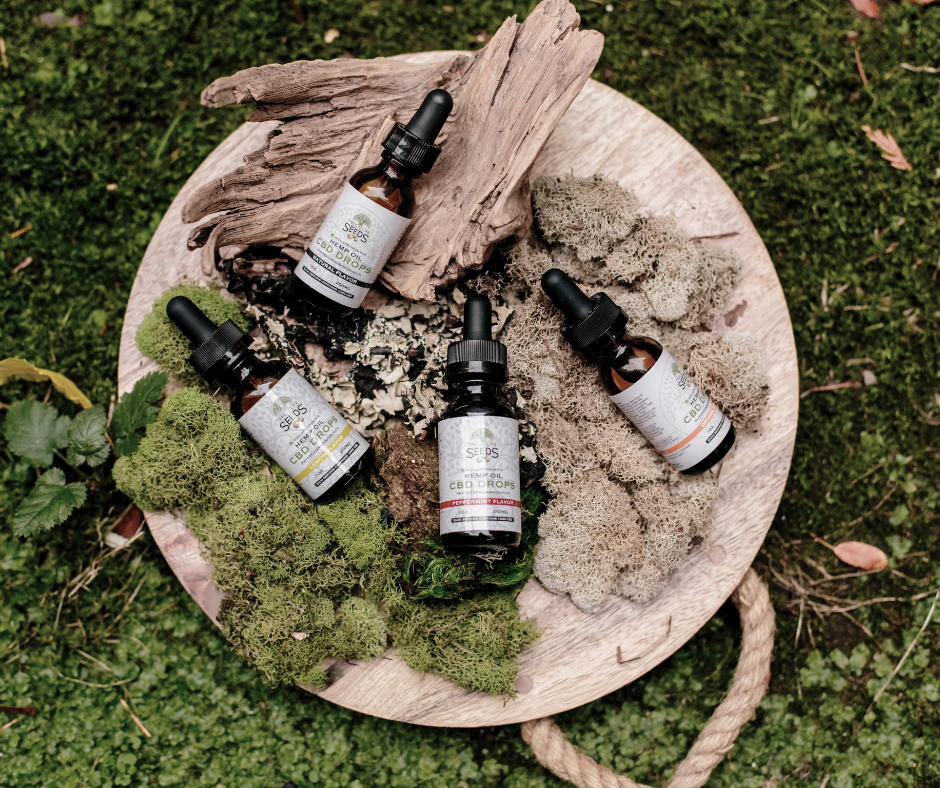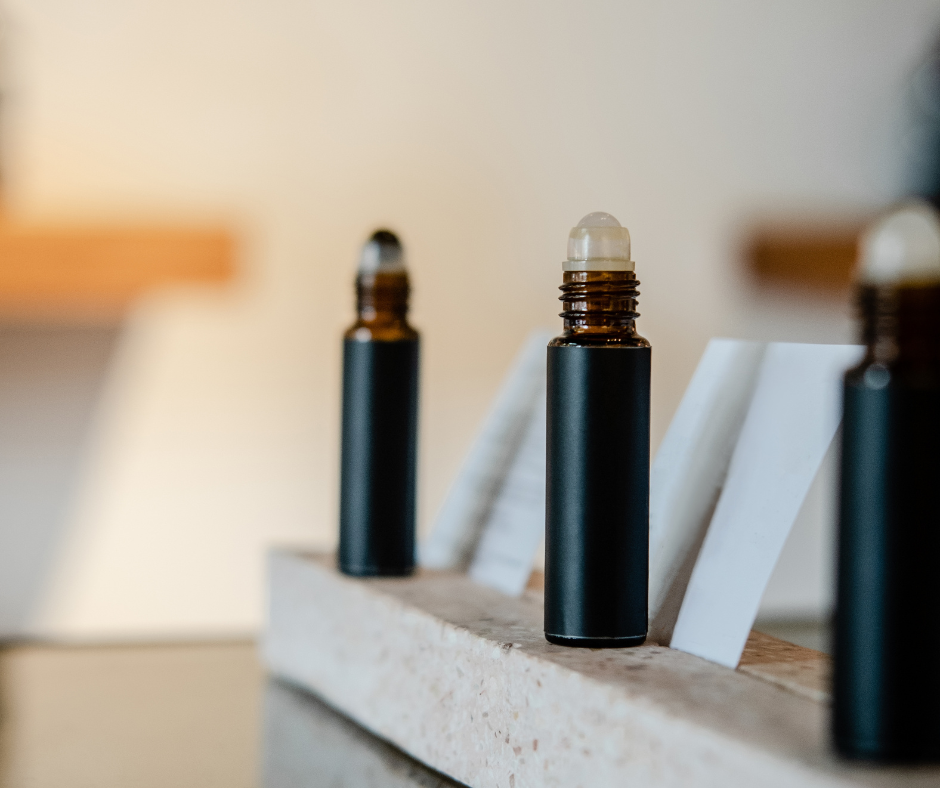

CBG vs CBD vs CBN: What’s the Difference Between These Cannabinoids?
Summary
Reflection Questions
Journal Prompt
What is CBG vs CBD vs CBN? CBG, CBD, and CBN, all of which are derived from the cannabis plant, have garnered attention for their potential therapeutic benefits, but deciphering their differences can be a challenging task. In this article, we outline their distinctive properties, potential applications, and legal considerations of CBG, CBD, and CBN, providing you with a comprehensive guide to navigate the ever-evolving landscape of cannabinoids. Whether you’re exploring these compounds for their health benefits or simply seeking to expand your knowledge, learn all about the many products derived from cannabis plants.
Understanding CBD, CBG, CBN, and Other Cannabinoids
Cannabinoids are a class of chemical compounds found within the cannabis plant (Cannabis sativa). They interact with the endocannabinoid system (ECS) in both human and animal bodies, producing various physiological effects. Cannabinoids are characterized by their ability to bind to specific receptors in the ECS, which can have wide-ranging implications for health and well-being.
Role of Cannabinoids in the Endocannabinoid System
The endocannabinoid system (ECS) is a complex network of receptors, enzymes, and endocannabinoids that exists within the human body. The primary function of the ECS is to regulate homeostasis, ensuring that various physiological processes, such as mood, pain sensation, immune response, and appetite, remain balanced.
Cannabinoids, both endogenous (produced within the body) and exogenous (from external sources like cannabis), interact with two main types of receptors: CB1 and CB2. CB1 receptors are primarily found in the central nervous system, while CB2 receptors are predominantly located in the peripheral nervous system and immune cells. When cannabinoids bind to these receptors, they can modulate various bodily functions and influence the body’s response to different stimuli.
The Importance of Studying Different Cannabinoids for Various Therapeutic Purposes
The study of different cannabinoids is of paramount importance due to their potential therapeutic benefits. Research has shown that cannabinoids can exhibit a wide range of effects, including pain relief, anti-inflammatory properties, neuroprotective effects, and even potential in treating conditions like epilepsy and anxiety disorders.
Investigating specific cannabinoids, such as CBG, CBD, and CBN, allows researchers to explore their unique interactions with the ECS and their potential applications in addressing various health concerns. Understanding these distinctions is vital for developing targeted therapies and harnessing the full potential benefits of cannabinoids while minimizing potential side effects and risks.
As such, the study of cannabinoids continues to be a promising frontier in the field of medicine and wellness. However, more research must be undertaken to fully understand the effects of CBN vs CBG vs CBD products on the brain.
CBG (Cannabigerol)


Cannabigerol, commonly known as CBG, is one of the many cannabinoids found in the cannabis or hemp plant. It is a non-psychoactive compound, meaning it does not produce the characteristic “high” associated with THC. CBG is often referred to as the “mother cannabinoid” because it is the precursor to other major cannabinoids, including THC and CBD. While CBG is typically found in lower concentrations compared to THC and CBD, its potential therapeutic properties have garnered increasing attention. Unlike CBD, CBG is not as widely available.
Extraction and Sources of CBG
CBG can be extracted from various cannabis strains, but it is usually present in smaller quantities compared to THC and CBD. The extraction process typically involves using specialized techniques to isolate CBG from the plant’s flowers, leaves, or stems. Some cannabis cultivars are bred specifically to have higher CBG content, allowing for more efficient extraction.
Potential Therapeutic Benefits of CBG
CBG has demonstrated anti-inflammatory properties in preclinical studies. It may have the potential to alleviate inflammation associated with conditions like inflammatory bowel disease and arthritis. Research suggests that CBG may also offer neuroprotective benefits, making it a potential candidate for treating neurodegenerative diseases such as Huntington’s disease and Parkinson’s disease. CBG has shown promise in reducing intraocular pressure, making it a potential treatment for glaucoma, a condition characterized by increased eye pressure that can lead to vision loss.
Side Effects and Safety Considerations of CBG
CBG (Cannabigerol) is generally considered non-psychoactive, which means it does not produce the characteristic “high” or euphoric effects associated with THC (tetrahydrocannabinol), the primary psychoactive compound in cannabis. CBG interacts with the endocannabinoid system differently from THC, primarily binding to CB1 and CB2 receptors without inducing the psychotropic effects commonly associated with THC activation of CB1 receptors in the central nervous system.
However, it’s important to note that the term “non-psychoactive” does not mean CBG has no impact on the body and mind. CBG may have subtle effects on mood and cognition, but these effects are generally mild and not considered psychoactive in the way THC is. Some users may report feeling more relaxed or focused after using CBG, but this is typically not accompanied by intoxication or impairment.
CBG is generally considered safe and well-tolerated when used in moderate amounts. As with any substance, individual reactions may vary. Reported side effects are minimal and can include dry mouth, dizziness, and changes in appetite. It is essential to consult with a healthcare professional before incorporating CBG into your wellness routine, especially if you are taking medications or have underlying medical conditions.
Legal Status of CBG
The legal status of CBG can vary depending on the jurisdiction and the source of the compound. In many places, CBG extracted from industrial hemp with low THC content is considered legal, as hemp-derived products have gained acceptance in various countries. However, it’s crucial to be aware of local regulations and consult with legal authorities to ensure compliance with applicable laws regarding CBG products and their use.
CBD (Cannabidiol)


Cannabidiol, commonly known as CBD, is a prominent cannabinoid found in the cannabis plant. Unlike its psychoactive counterpart, THC, CBD does not produce a “high.” CBD has gained significant attention for its potential therapeutic properties and its use in various wellness products.
CBD can be extracted from different varieties of the cannabis plant, including hemp and marijuana. Hemp-derived CBD is often preferred for its low THC content, which makes it legal in many places. CBD is typically extracted using various methods, such as CO2 extraction, ethanol extraction, or solvent-based extraction. These methods isolate CBD from the plant material to create CBD-rich products.
Potential Therapeutic Benefits of CBD
CBD has shown promise in alleviating acute and chronic pain through its interaction with the endocannabinoid system and other receptors involved in pain perception. It may be used as an alternative or complementary option for pain management. In particular, scientists have studied the ability of CBD to relieve myofascial pain.
CBD has also been studied for its potential anti-anxiety and stress-reducing effects. Some users report feeling calmer and more relaxed after consuming CBD, which has led to its use in addressing various anxiety disorders.
Epidiolex, a CBD-based medication, has been approved by the FDA for the treatment of two rare forms of epilepsy: Dravet syndrome and Lennox-Gastaut syndrome. CBD has demonstrated its effectiveness in reducing the frequency and severity of seizures in some patients.
Side Effects and Safety Considerations of CBD
CBD is generally considered safe and well-tolerated. However, some individuals may experience mild side effects, including dry mouth, dizziness, changes in appetite, and diarrhea. CBD can also interact with certain medications, so it is essential to consult with a healthcare professional before using it, especially if you are taking other medications or have underlying medical conditions.
Legal Status of CBD
The legal status of CBD varies by country and jurisdiction. In many countries, hemp-derived CBD with minimal THC content (typically less than 0.3%) is legal for sale and use. However, laws regarding CBD can be complex and subject to change, so individuals should be aware of local regulations and consult with legal authorities to ensure compliance when using CBD products.
CBN (Cannabinol)


Cannabinol, or CBN, is a lesser-known cannabinoid found in the cannabis plant. It is often considered a breakdown product of THC that develops as THC ages or oxidizes. CBN is not psychoactive to the same extent as THC and is typically present in very low concentrations in most cannabis strains. In some cases, it can have mildly psychoactive effects but this is fairly rare.
CBN is not usually the primary target of extraction, as it occurs in trace amounts in fresh cannabis plants. Instead, it is more commonly found in aged or degraded cannabis material, such as old cannabis flowers or stored cannabis products that have been exposed to air and light over time. Some manufacturers may isolate CBN through specific extraction techniques, but it remains less prevalent than other cannabinoids like THC or CBD.
Potential Therapeutic Benefits of CBN
CBN has been suggested to have sedative properties, potentially aiding individuals in achieving better sleep. While research is limited, some users have reported improved sleep quality after using CBN products.
CBN may offer mild pain-relieving effects, though it is generally less potent in this regard compared to THC or CBD. It may be considered as part of a broader approach to managing pain. Some studies have suggested that CBN could possess antibacterial properties, although further research is needed to confirm its effectiveness in this regard.
Side Effects and Safety Considerations of CBN
CBN is considered safe when used in moderation, and side effects are typically mild, including dizziness, dry mouth, and potential drowsiness due to its sedative properties. However, individual reactions may vary, so it is advisable to exercise caution and consult with a healthcare professional if using CBN, especially in combination with other medications.
While CBN is generally not considered strongly psychoactive, very high doses of CBN may produce mild psychoactive reactions in some individuals, including feelings of euphoria or altered perception. However, these effects are much less pronounced than those associated with THC.
Legal Status of CBN
The legal status of CBN may vary depending on local regulations and the source of the compound. In many places, CBN derived from industrial hemp with minimal THC content is considered legal, similar to CBD. However, the legality of CBN products can be subject to change, so individuals should be aware of local laws and consult with legal authorities to ensure compliance when using CBN products.
Comparing CBG, CBD, and CBN


CBG, CBD, and CBN are all cannabis compounds found in the same plant, sharing a common chemical framework of 21 carbon atoms, 30 hydrogen atoms, and two oxygen atoms. They differ slightly in their molecular structures, with each having its unique arrangement of atoms and functional groups. Importantly, none of these cannabinoids have the mild psychoactive properties associated with THC, which has a different chemical structure.
Key Differences in Effects and Applications
While CBG, CBD, and CBN share some commonalities, they also have distinct effects and potential applications. CBG is primarily associated with potential anti-inflammatory and neuroprotective effects, CBD is renowned for its versatility, offering potential benefits in pain management, anxiety relief, and epilepsy treatment, and CBN is suggested to aid in sleep, mild pain relief, and possible antibacterial properties. These differences stem from their varying interactions with the endocannabinoid system and other receptors in the body.
Synergy Between Cannabinoids (Entourage Effect)
One of the intriguing aspects of cannabinoids is the possibility of the entourage effect. This concept suggests that when multiple cannabinoids and other compounds found in the cannabis plant are consumed together, their combined effects may be more significant than when each cannabinoid is used in isolation.
For example, CBD and THC may work together synergistically, potentially enhancing therapeutic benefits while minimizing side effects. More research into the entourage effect is ongoing and holds promise for optimizing the use of cannabis-based products.
Choosing the Right Cannabinoid for Specific Needs
Selecting the most suitable cannabinoid depends on individual needs and preferences. CBG, CBD, and CBN each offer unique potential benefits, so the choice should align with the desired outcome. For addressing specific conditions or symptoms, consulting with a healthcare professional is advisable.
It’s also essential to consider the source and quality of cannabinoid products, as well as any legal restrictions in your region when making a decision. Overall, the diversity of cannabinoids allows for a personalized approach to wellness, tailoring cannabinoid use to meet individual requirements.
Finding Reputable Sources
When seeking cannabinoid products such as CBG, CBD, or CBN, it’s crucial to source them from reputable and trusted sources. Look for companies or dispensaries that provide third-party lab testing results, ensuring product quality, potency, and purity. Read reviews and seek recommendations from trusted sources or healthcare professionals to help guide your decision.
Choosing Between Different Product Forms
Cannabinoid products come in various forms, including oils, tinctures, capsules, edibles, topicals, and more. The choice of product form depends on your preferences and the specific purpose. For fast absorption and precise dosing, consider tinctures or oils. Capsules offer convenience and consistent dosing, while edibles may have a slower onset but provide longer-lasting effects. Topicals are suitable for localized relief. Select the form that aligns with your needs and lifestyle.
Dosage Considerations
Determining the right dosage of cannabinoids is essential for achieving desired effects and avoiding potential side effects. Start with a low dose and gradually increase until you achieve the desired results. Dosage can vary significantly among individuals due to factors like body weight, metabolism, and tolerance. Pay attention to product labels, which often provide recommended serving sizes. Keep in mind that it may take some time to find the optimal dosage, so patience and careful monitoring of your response are essential.
Consultation with Healthcare Professionals
Before incorporating cannabinoids into your wellness routine, it is advisable to consult with a healthcare professional, especially if you have underlying medical conditions or are taking other medications. They can provide personalized guidance, monitor potential interactions, and ensure that cannabinoid use aligns with your overall health and wellness goals. Healthcare professionals can also help you navigate potential legal considerations related to cannabinoid use in your region, ensuring a safe and responsible approach.
Final Thoughts on the Differences Between CBD, CBN, and CBG


To recap, CBG shows promise in inflammation management and neuroprotection, CBD offers versatility in addressing pain, anxiety, and epilepsy, and CBN potentially aids in sleep and mild pain relief. It is essential to approach cannabinoid use with a sense of responsibility and informed decision-making. Consultation with healthcare professionals, careful dosing, and sourcing products from reputable providers are key steps in ensuring safe and effective use.
As the field of cannabinoid research continues to evolve, we can anticipate further discoveries that may shape the future of healthcare and wellness. Stay informed, stay responsible, and explore the potential benefits of these cannabinoids in a manner that aligns with your individual needs and circumstances.








